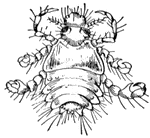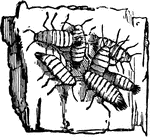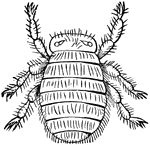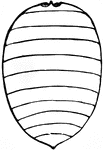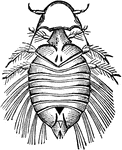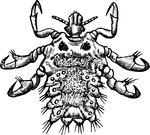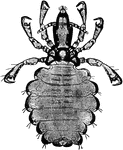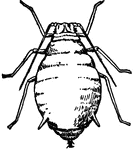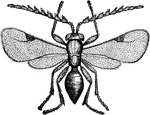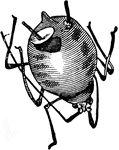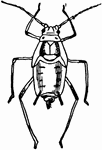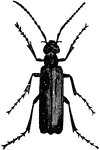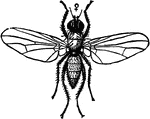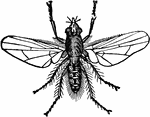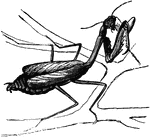This gallery includes 949 illustrations of other orders of insects.

Locusts
"Locusts, which, from their often collecting in vast swarms, and moving onward with a steady and irresistable…
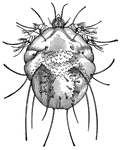
Head Louse
Head lice are parasites. That is any plant or animal which feeds upon another living plant or animal…
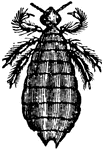
Louse (Pediculus Capitis)
"The Head-louse is an insect with a flat body, slightly transparent, and of a grayish color."

Magnified Louse
"A genus of insects, the type of a very numerous family, which forms the order Parasita or Auoplura.…

Apple Louse
"Aphis; a genus of small plant-sucking insects, of the family Aphididæ and order Homoptera."-Whitney,…

Apple Plant Louse
The females deposit their eggs, which are small, oval, and black, on twigs and bark in the autumn; the…

Apple Plant Louse
The females deposit their eggs, which are small, oval, and black, on twigs and bark in the autumn; the…
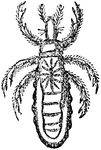
Crab Louse
Pediculus Pubis. The crab-louse is gray-black and is a much broader square form than the other two species…

Geranium Plant Louse
"Aphis; a genus of small plant-sucking insects, of the family Aphididæ and order Homoptera."-Whitney,…
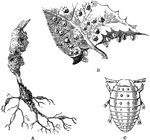
Grape or Vine Louse
The grape or vine louse belongs to the Aphides, or Green Flies. The insect lives on the European vine.…

Grape-Root Louse
Phylloxera Vastatrix, a grape-vine-root gall-louse, is by many entomologists supposed to be another…

Hop Louse
"Hop louse which lives on the plum tree in the late fall, winter, and early spring until the hop vines…
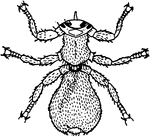
Sheep Louse
"A common dipterous insect, which feeds upon the blood of sheep and lambs."—Finley, 1917

Wood Louse
Wood-lice are commonly found under stones or in crevices of old walls. When disturbed, they curl up…

Wood Louse
Wood-lice are commonly found under stones or in crevices of old walls. When disturbed, they curl up…
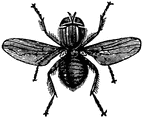
Lucilia Hominivorax
"A specimen of the golden fly; it is rather more than one third of an inch in length."

Larvae and Web of Lyda Pyri
Lyda is a genus of sawflies. Lyda pyri injure plums and other stone fruit trees. The habits of the larvae…

Seed-Corn Maggot
"Seed-corn Maggot (Phorbia fusciceps). a, maggot; b, pupa. Kernels of Maize, showing work of the maggot."…

Male Gipsy Moth
The male gipsy moth is dark brown or smoky with zigzag darker markings and lighter shades. The antennae…
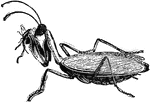
Mantis
A genus of locusts remarkable for their form. They are widely distributed in the United States and Eurasia.…
